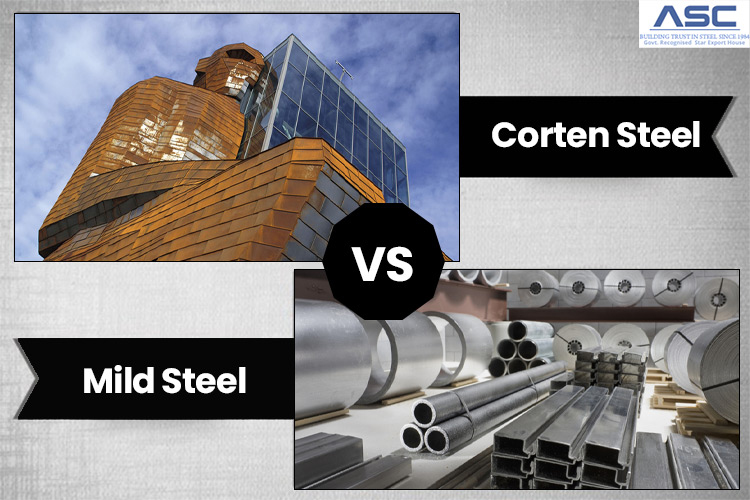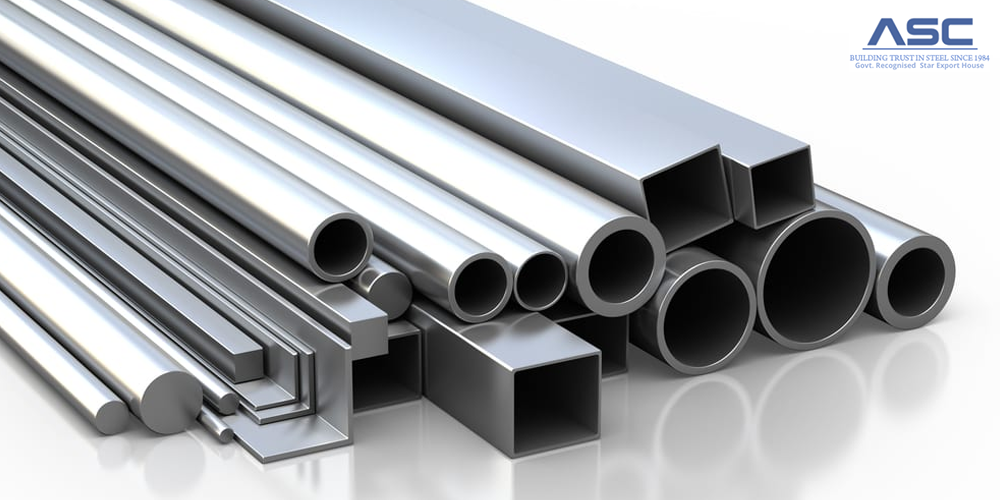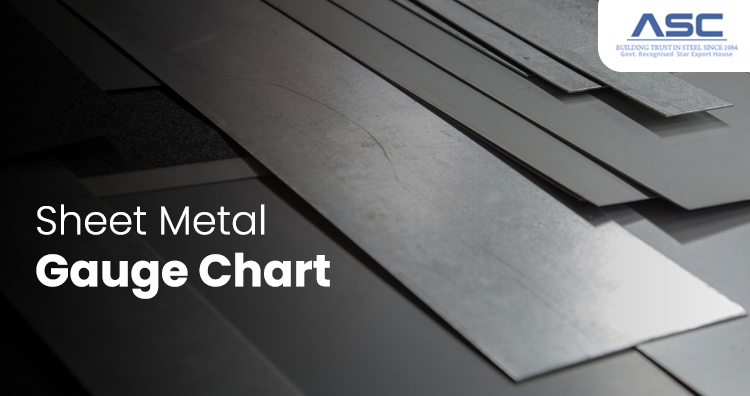Difference & Similarity Between Aluminium 6061-T6 & Aluminium 6063-T5
Posted on July 16, 2021 at 3:00 PM

AA (Aluminium Alloy) 6061-T6 is an aluminium alloy which is precipitation-hardened. Precipitation hardening is a heat treatment technique which increases the yield strength of the malleable materials, including most alloys of aluminium. AA 6061-T6 contains magnesium and silicon as the alloying elements which occupy a major stake in its making.
Amardeep Steel offers a brief overview of the differences between the 6063-T5 and 6063-T6 aluminum profiles.
- 6063-T5: This profile is created through a high-temperature forming process followed by artificial aging. First, the aluminum is molded at a high temperature, then cooled, and finally treated with aging to enhance its properties.
- 6063-T6: This profile undergoes solution heat treatment before artificial aging. The aluminum is heated to dissolve impurities, then it is aged to achieve its final strength.
6061 Aluminum vs. 6063 Aluminum: Which Is Right for Your Project?
- 6061 Aluminum: This alloy is known for its high strength-to-weight ratio. It is also easy to machine and weld, making it a great choice if you need strength and durability in your project. You can find high-quality 6061 aluminum products for various needs.
- 6063 Aluminum: If you need an aluminum alloy that is easy to extrude, with excellent corrosion resistance and a smooth surface finish, 6063 aluminum is the better option. It's well-suited for applications where these qualities are important.
Choose the aluminum alloy that best matches the specific requirements of your project.
Differences Between AL 6061 and AL 6063 Aluminum
Both AL 6061 and AL 6063 aluminum alloys have their own strengths. Understanding their differences can help you choose the right one for your needs:
- 6061 Aluminum:
- Has a lower melting temperature.
- Offers lower thermal conductivity and heat capacity.
- Provides higher yield and fatigue strength compared to 6063-T6.
- Less resistant to corrosion than 6063.
- 6063 Aluminum:
- Has a higher melting temperature.
- Offers higher thermal conductivity and heat capacity.
- Provides a better surface finish, making it ideal for architectural applications.
AA 6063-T5 is also an aluminium alloy having the same alloying elements of magnesium and silicon. So the to find the key difference between the two, we must first take a look at the chemical composition of both.
The Chemical Composition for 6061-T6 is as follows:
- Magnesium minimum 0.8%, maximum 1.2%
- Zinc no minimum, maximum 0.25%
- Titanium no minimum, maximum 0.15%
- Silicon minimum 0.4%, maximum 0.8% by weight
- Iron no minimum, maximum 0.7%
- Copper minimum 0.15%, maximum 0.4%
- Manganese no minimum, maximum 0.15%
- Other elements no more than 0.05% each, 0.15% total
- Remainder aluminium (95.85–98.56%)
The Chemical Composition for 6063-T5 is as follows:
- Silicon minimum 0.2%, maximum 0.6% by weight
- Iron no minimum, maximum 0.35%
- Copper no minimum, maximum 0.10%
- Manganese no minimum, maximum 0.10%
- Magnesium minimum 0.45%, maximum 0.9%
- Chromium no minimum, maximum 0.10%
- Zinc no minimum, maximum 0.10%
- Titanium no minimum, maximum 0.10%
- Other elements no more than 0.05% each, 0.15% total)
- Remainder Aluminium(97.6%-99.30%)
| Alloying Elements – Percent | |||||||||||
|---|---|---|---|---|---|---|---|---|---|---|---|
| Alloy | Mn | Fe | Mg | Si | Cu | Zn | Ti | Cr | Other (Each) | Others (Total) | Al |
| 6061 | 0.0 – 0.15% | 0.0 – 0.70% | 0.80 – 1.20% | 0.40 – 0.80% | 0.15 – 0.40% | 0.0 – 0.25% | 0.0 – 0.15% | 0.04 – 0.35% | 0.0 – 0.05% | 0.0 – 0.15% | Balance |
| 6063 | 0.0 – 0.10% | 0.0 – 0.35% | 0.45 – 0.90% | 0.20 – 0.60% | 0.0 – 0.10% | 0.0 – 0.10% | 0.0 – 0.10% | 0.0 – 0.10% | 0.0 – 0.05% | 0.0 – 0.15% | Balance |
6061 Aluminum or 6063 Aluminum: Which is Best for Your Project?
Mechanical Properties of 6061 Aluminum & 6063 Aluminum| 6061 | 6063 | |
|---|---|---|
| Tensile strength | 124-290 MPa | 145–186 MPa |
| Yield strength | 276 MPa/40000 psi | 214 MPa/31000 psi |
| Fatigue strength | 96.5 MPa/14000 psi | 68.9 MPa/10000 psi |
| Hardness (Brinell) | 95 | 73 |
| Machinability | Good | Fair |
| Thermal conductivity | 151-202 W/(m·K) | 201-218 W/(m·K) |
Performance Characteristics of 6061 vs 6063 Aluminum
| Alloy & Temper | Resistance to Corrosion | Weldability | ||||||
|---|---|---|---|---|---|---|---|---|
| General | Stress – Corrosion Cracking | Workability (Cold) | Machinability | Brazeability | Gas | Arc | Resistance Spot & Seam | |
| 6061-O | B | A | A | D | A | A | A | B |
| 6061-T4, T451, T4510, T4511 | B | B | B | C | A | A | A | A |
| 6061-T6, T651, T652, T6510, T6511 | B | A | C | C | A | A | A | A |
| 6063-T1 | A | A | B | D | A | A | A | A |
| 6063-T4 | A | A | B | D | A | A | A | A |
| 6063-T5, T452 | A | A | B | C | A | A | A | A |
| 6063-T6 | A | A | C | C | A | A | A | A |
| 6063-T83, T831, T832 | A | A | C | C | A | A | A | A |
Applications of 6061 VS 6063
6061 and 6063 are both popular alloys of aluminum that are used in a variety of applications. While they have some similarities, they also have some key differences that make them better suited for certain applications. Here are some of the applications of 6061 and 6063:
6061:
- Structural applications:6061 is a high-strength alloy that is ideal for structural applications such as building frames, bridges, and aircraft structures.
- Automotive components: 6061 is also used in the manufacturing of automotive components such as wheels, suspension components, and chassis parts.
- Marine components: Due to its corrosion-resistant properties, 6061 is often used in marine applications such as boat hulls and decks.
- Electrical components:6061 is a good conductor of electricity and is often used in the manufacturing of electrical components such as heat sinks and busbars.
- Architectural applications: 6063 is commonly used in architectural applications such as window frames, door frames, and curtain walls due to its aesthetic appeal and good corrosion resistance.
- Furniture:The alloy's strength and corrosion resistance make it ideal for furniture applications such as chairs and tables.
- Piping and tubing:6063 is often used in piping and tubing applications due to its excellent formability and extrudability.
- Solar panel frames: The alloy's lightweight properties and good corrosion resistance make it ideal for the manufacturing of solar panel frames.
Conclusion
Both are strong and more ductile than other alloys. However, the most important property that distinguishes
these materials is their ability to handle high temperatures. High-temperature durability is critical to
producing ductile alloys while simultaneously being durable enough to be used in applications where metal
melting temperatures do not reach the limits of steel.
Because both aluminum and magnesium are fairly easy to produce, there is no clear-cut choice when it comes to
identifying the best 6061 or 6063 aluminum extrusion for your next project. A lot of factors need to be
considered when making this decision such as your intended use of the extrusion if it will be used on a
product, the design requirements for the product is intended as an ingredient in another product or used on an
assembly line, and any other factors that may come into play when extruding metal such as swelling, softening
or porosity.
If you wish to buy 6061- T6 or 6063- T5 you need to first identify the product that suits your requirement and
can help you in your project. We at Amardeep steel help you best
in identifying the right product that fits
your needs. In such fields, one should always take advice from someone who can be trusted and is experienced.
We cater to your needs and make them our own.

Difference Between Corten Steel and Mild Steel
Mild steel, also known as carbon steel, is the most prevalent type of steel today. Mild steel is less expensive and, once sealed.

